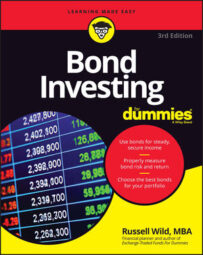There are newer ways of thinking about how much of a retirement portfolio belongs in bonds. Most financial pros have moved well beyond the old adage, held dearly for years, that the percent of your portfolio held in bonds should be equal to your age. (By age 60, you should be 60 percent in bonds; by age 70, 70 percent; and so on.)
“The real risk to most people’s portfolios is, paradoxically, not taking enough market risk with higher-returning but more volatile investments, like stocks and commodities,” says Steve Cassaday, CFP, president of Cassaday & Company, Inc., an investment management and financial planning firm in McLean, Virginia.
“Given what most people have saved by retirement, and the average lifespan today, a more aggressive portfolio is the only choice if people are going to maintain their lifestyles.”
Cassaday has researched the returns of various kinds of investments over the past 35 years and has concluded that a portfolio of 15 percent bonds and 2.5 percent cash, with the rest in more aggressive but very well-diversified investments like stocks and commodities, actually offers the greatest degree of absolute safety to the average investor.
In other words, he opts to put his retired clients in portfolios that are over 80 percent equities, including U.S. stock, foreign stock, REITs, and commodities.
Cassaday’s views were published in the Journal of Financial Planning and created quite a stir among professional financial types, many of whom are skeptical, at best, of Cassaday’s conclusions.
Cassaday’s aggressive portfolios, when back-tested (using computers to simulate how they would have done over history), have held up remarkably well through both bull and bear markets. Sure, they dip when the stock market is down, but they come back — at least to date they have.
The aggressiveness of Cassaday’s approach may not be right for all investors for two reasons:
The future of the stock market may be not quite as rosy as the past.
A portfolio of more than 80 percent equity is subject to huge dips in bad times. People tend to panic and sell their fallen angels just when they should be holding them the most. The stock and commodity markets are like giant rubber bands: After the biggest down stretches, you tend to see the strongest snap-backs, and vice versa.
Keep in mind that a portfolio of 80 percent stocks and 20 percent bonds will have short-term setbacks, some of them major. According to data compiled by Vanguard, such a portfolio has seen negative annual returns in 23 of the past 86 years. But the average annual return has been a very impressive 9.4 percent.
“The tradeoff for occasional annual returns below the long-term average has historically been long-term returns well above what is possible with a more stable portfolio,” says Cassaday.
“Our guidance to clients has always been to hold on to the side of the kayak when things get rough. Declines have always become recoveries, and as long as you do not need all of your money in one lump sum and any given point (very few ever do), then it has always paid to wait.”
Not every investor can “hold on to the side of the kayak.” For those who can’t, a somewhat less aggressive portfolio than Cassaday advises will probably work best. (Cassaday himself amends his portfolio for his clients who can’t emotionally handle a lot of volatility.)
William P. Bengen, CFP, wrote a book for other financial planners called Conserving Client Portfolios During Retirement (FPA Press). His book suggests something of a compromise between Cassaday’s portfolio and the traditional age-based portfolio. Most financial planners are much more in line with Bengen’s thinking than with Cassaday’s.
Bengen, like Cassaday, crunched the numbers backwards and forwards. His conclusion: Yes, tweak your portfolio as you approach retirement to include more bonds and fewer stocks, but don’t tweak it too much. “Given that stock returns have historically creamed bond returns, you may need those stock returns if your portfolio is going to last as long as you do,” says Bengen.
For most people, says Bengen, 40 percent nonvolatile, safe investments is probably enough. If you want to get more conservative than that, Bengen suggests that you subtract your age from 120 and allocate that amount to the safe and nonvolatile. For example, at age 60, you might give yourself a 60/40 split (stocks/bonds), and at age 65, you might give yourself a 55/45 split.
“I wouldn’t update asset allocation every year — only every fifth year, on a birthday divisible by five,” says Bengen. Our 65-year-old above might then, at age 70, go for a 50/50 split.
Bengen’s formula is not as far from Cassaday’s as it may initially seem. The stocks part of the equation may include any investment with a potentially high yield but also potential volatility: commodities, investment real estate, junk bonds, and even 30-year Treasuries. The bond side of his portfolio would include any kind of truly nonvolatile investment, including short- and intermediate-term high-quality bonds, annuities, and CDs.
And to some degree, investors should tweak the percentages in accordance with economic conditions. Keep an eye out for extreme changes in market conditions and tweak as needed. “Don’t be wooden,” says Bengen.

